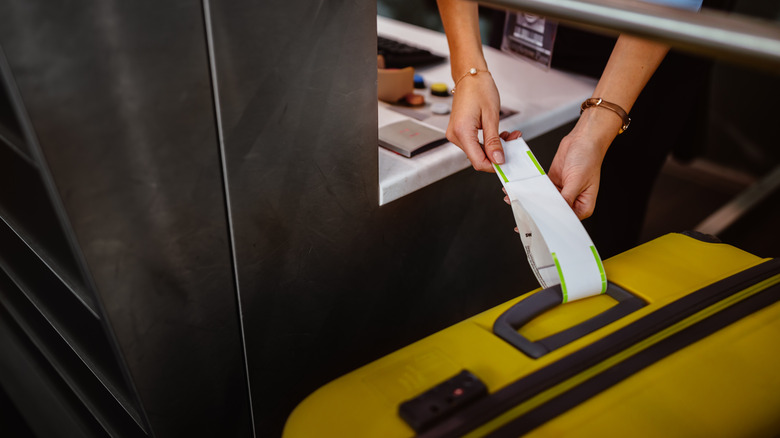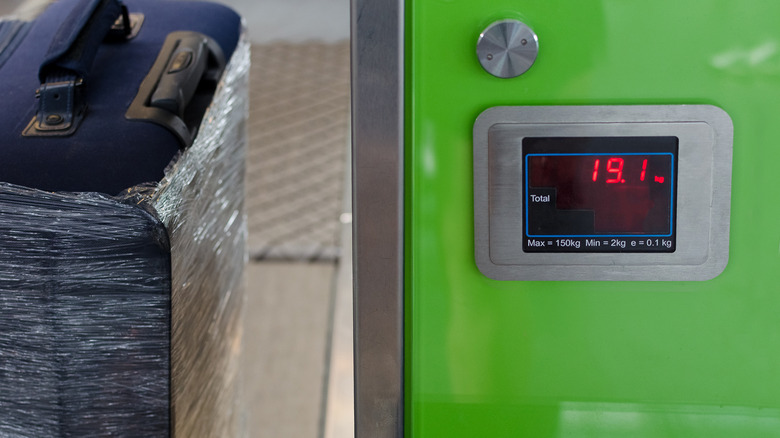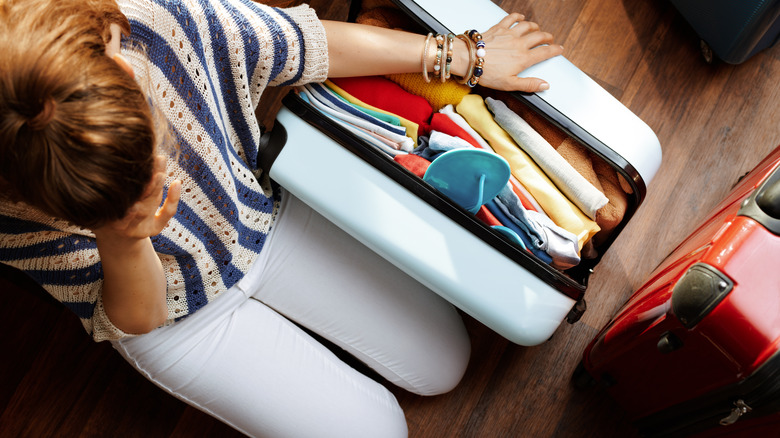Is It Better To Pay For A Second Checked Bag Or Pay The Overweight Fees?
Packing for a trip usually presents a familiar dilemma: Is it better to shove everything into one suitcase and risk being slapped with excess bag fees? Or do you divide your belongings between two bags and pay for an additional piece of checked luggage? As anyone who has stood at the airline check-in counter — anxiously watching as their luggage is weighed — can confirm, this simple decision can either make or break the beginning of any vacation.
Luckily, travel experts seem to agree: More often than not, it's financially wiser to pay for a second checked bag than an overweight fee. Why? Because nowadays, most U.S. airlines have structured their luggage fees so that an additional bag is much more affordable than the penalty for exceeding the weight limit of a single bag. According to airlines, this is to make sure that they'll be better prepared to manage and distribute the overall weight on the aircraft — ensuring optimal fuel efficiency and safe handling during takeoff, flight, and landing.
Weighing the costs of excess baggage
Comparing fees between local and international airlines reveals a consistent pattern. For example, United Airlines charges its passengers up to $35 for the first checked bag ($30 if prepaid) and $45 for the second bag ($40 if prepaid) on domestic flights. In comparison, if you're flying Economy and your bag is between 50-70 pounds, you can expect to pay up to $200 per bag. And what happens if the scale goes over 70 pounds? In this case, overpacking will set you back around $400! Talk about a steep difference. The same principle applies to international flights: Checking a second bag ranges between $35 to $100, depending on the destination, and overweight fees will set you back between $200-$400.
But why do these fees and weight restrictions exist? For one, the Federal Aviation Administration (FAA) sets strict regulations on maximum takeoff weights determined by the size and capacity of the aircraft. In line with this, airlines have to ensure that they're not exceeding these, or they might otherwise compromise the safety of the flight.
Additionally, as mentioned earlier, the weight of luggage also affects the balance and fuel efficiency of the aircraft. A heavier plane typically uses more fuel and drives up operational costs — especially with fuel prices on the rise. Moreover, consistently carrying excess weight can also lead to wear and tear on the aircraft's brakes and tires, which can lead to higher maintenance costs and potential safety risks in the long run.
Dodging the overweight fees
With reports of planes crashing or malfunctioning due in part to exceeding weight restrictions — from the accident that killed musician Aaliyah in 2001, to a crash in Charlotte, NC just two years later, to a more recent crash near Michigan in 2019 — it seems that, when it comes to overpacking, it's better to be safe than sorry.
So how can you make sure you're staying within the limit and packing light? For starters, the 54321 packing rule is a great way to bring everything you need without going overboard. According to this method, you only need to pack five tops, four bottoms, three dresses, three pairs of shoes, two swimsuits, two bags, and one set of accessories for any trip. Not only does this ensure that you won't pack more than you need, but it also helps simplify your outfit choices when getting ready.
If that packing rule just isn't cutting it for what you want to bring, then consider putting together a general packing list. The more you travel, the more you'll realize what actually constitutes an essential. Plus, by writing down everything you're expecting to fit into your suitcase, you can pare things down if you notice the list is getting too long. Lastly, lightweight luggage can also make a difference. Nowadays, most modern luggage designs boast durable, yet light, materials, which means you won't be wasting precious weight on the suitcase itself.


